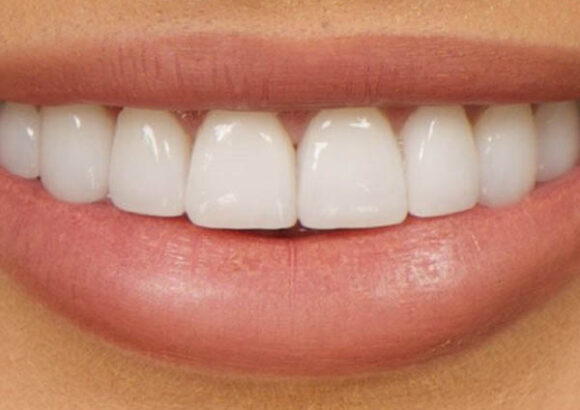Veneers

Dental veneers (sometimes called porcelain veneers or dental porcelain laminates) custom-made shells of tooth-colored materials designed to cover the front surface of teeth to change your appearance. These shells are bonded to the front of the teeth, changing their color, shape, size, or length.
FAQ
Veneers can be made from porcelain or from resin composite materials. You can discuss the best choice of veneer material for you with your dentist.
Pop-on veneers
Pop-on veneers also known as removable or Snap-On veneers, they cover your natural teeth to hide any imperfections. Pop-on veneers Instantly change the look of your smile, they are one of the least expensive veneer options, can be taken out at any time. Pop-on can make it hard to eat, and they can change the way you talk.
Composite veneers
Composite veneers can help fix small issues, such as a cracked tooth or a small gap in your teeth. Your dentist applies a composite resin made of plastic and ceramic directly to your teeth. In many cases, the entire treatment can be finished in one visit. Composite veneers are one of the most common treatment options.
No-prep veneers
While no-prep veneers are the most conversative on the tooth structure compared to the other types of veneers. They still require the removal of some enamel. This treatment is great for fixing small gaps in your teeth. Check with your dentist to see whether no-prep is right for you.
Porcelain veneers
Porcelain veneers resist stains better than resin veneers. They have more of the light-reflecting features of natural teeth. Your dentist will remove some outer part of your teeth (Enamel) and custom-fit the veneers to them. The enamel removal makes the surface of your teeth rough and helps keep the veneers in place.
Veneers are often used on teeth that: Are discolored, worn down, Chipped, crooked, uneven, or oddly shaped (for example, some teeth have craters or bulges in them) Have gaps between them (to close the space)
Diagnosis and treatment planning
First, you will talk to your dentist about the result you want. During this appointment, your dentist will look at your teeth to make sure dental veneers are right for you. You’ll discuss the procedure and some of its limits. They may take X-rays and possibly make impressions of your mouth and teeth.
Preparation
To get a tooth ready for a veneer, your dentist will reshape the tooth surface. Next, your dentist will make a model, or impression, of your tooth. This model is sent out to a dental laboratory, which makes your veneer. It usually takes 2-4 weeks for the veneers to come back from the lab. Temporary dental veneers can be used in the meantime.
Veneers offer these advantages: They look like a natural tooth, Gums usually aren’t sensitive to porcelain, Porcelain veneers are not easily stained, A color can be selected to make darker teeth appear brighter. They generally don’t require as much shaping as crowns do, and they are stronger and look better.
Veneers are known to be very sturdy and long-lasting. But they do have some drawbacks, too.
Some disadvantages to porcelain veneers include: The process cannot be undone. Veneers cost more than composite resin bonding, Veneers usually cannot be repaired if they chip or crack. Because enamel has been removed, your tooth may become more sensitive to hot and cold foods and drinks. If you only get one or a few veneers, they may not exactly match the color of your other teeth. Also, the veneer’s color cannot be changed once it’s in place. If you plan on whitening your teeth, you need to do so before getting veneers. Though not likely, veneers can come loose and fall off. To reduce the chance of this happening, do not bite your nails, chew on hard things (like pencils, ice or other objects), or otherwise put too much pressure on your teeth. Teeth with veneers can still decay. If that happens, it could mean covering the whole tooth with a crown. Veneers are not a good choice for people with unhealthy teeth (for example, those with decay or active gum disease), weakened teeth (as a result of decay, fracture, large dental fillings), or for those who don’t have enough existing enamel on the tooth surface. If you clench or grind your teeth, porcelain veneers may not be for you. The veneers could crack or chip.

